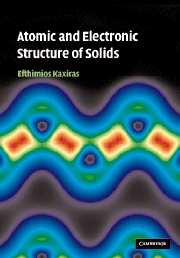II - Defects, non-crystalline solids and finite structures
Published online by Cambridge University Press: 06 July 2010
Summary
The crystalline structure of solids forms the basis for our understanding of their properties. Most real systems, however, are not perfect crystals. To begin with, even in those real solids which come close to the definition of a perfect crystal there are a large number of defects. For instance, in the best quality crystals produced with great care for the exacting requirements of high-technology applications, such as Si wafers used to manufacture electronic devices, the concentration of defects is rarely below one per billion; this corresponds to roughly one defect per cube of only 1000 atomic distances on each side! These imperfections play an essential role in determining the electronic and mechanical properties of the real crystal. Moreover, there are many solids whose structure has none of the characteristic symmetries of crystals (amorphous solids or glasses) as well as many interesting finite systems whose structure has some resemblance to crystals but they are not of infinite extent. This second part of the book is concerned with all these types of solids and structures.
A natural way to classify defects in crystalline structure is according to their dimensionality:
(i) Zero-dimensional or “point” defects consist of single atomic sites, or complexes of very few atomic sites, which are not in the proper crystalline positions; examples of point defects are missing atoms called vacancies, or extra atoms called interstitials. Point defects may also consist of crystalline sites occupied by atoms foreign to the host crystal; these are called substitutional impurities.
(ii) One-dimensional defects consist of lines of atomic sites perturbed from their ideal positions; these can extend for distances comparable to the linear dimension of the solid. The linear defects are called dislocations.
[…]
Information
- Type
- Chapter
- Information
- Atomic and Electronic Structure of Solids , pp. 315 - 316Publisher: Cambridge University PressPrint publication year: 2003
